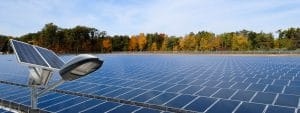Despite facing flak at the World Trade Organisation (WTO) for the domestic content requirement clause in the National Solar Mission, the government is still looking at means to aid the solar equipment manufacturing industry.

According to BusinessLine, towards this end, the NTPC may be mandated to meet its entire auxiliary power requirement through domestically manufactured solar equipment.
The US had dragged India to the WTO three years ago for the domestic content requirements under the Jawaharlal Nehru National Solar Mission.
It subsequently won the case as India was not able to prove that sourcing of the equipment was part of government procurement where there were no restrictions on localisation. The government officials said NTPC’s tenders would be out of the purview of this ruling as they meet the WTO norms on procurement.
Auxiliary power is used by NTPC to run its thermal plants. This power is consumed during plant start-ups and shutdowns, operation of plant machinery and service equipment to support illumination, air-conditioning etc. Currently, power plants source electricity from the grid to meet the auxiliary requirement. This is offset from the generation made by the thermal power plant during the time of billing.
According to the Central Electricity Regulatory Commission’s recommendations on operation norms for thermal power stations for the tariff period 2014 to 2019, auxiliary energy consumption in the range of 6-9 per cent is permitted.
Effectively, this means that thermal power plants can comfortably consume between six and nine units of energy for every 100 units they generate.
NTPC may also enable a power banking mechanism with the power distribution company to offset any consumption of thermal power when solar energy is not available.





























